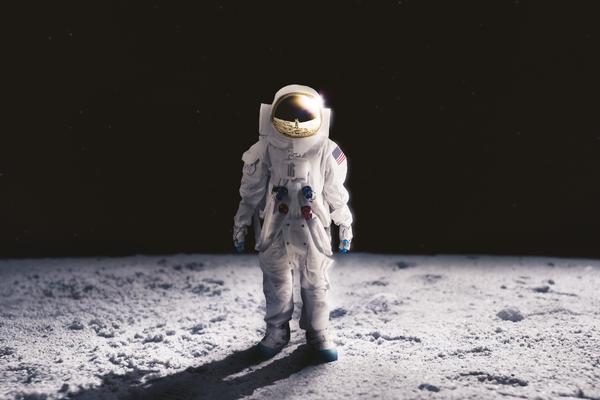The largest set of doors in the world rolled up at the Kennedy Space Center in Merritt Island, Florida, early on March 17.
The space agency’s newest and most powerful rocket stood in NASA’s largest building, standing about 100 meters tall.
And that rocket, unlike any in the previous 50 years, will deliver passengers to the Moon.
More than 50 years after the last US astronauts visited the lunar surface during the Apollo mission, NASA intends to utilize its new rocket to bring crews back to the Moon.
NASA envisions sending astronauts to the Moon in the future to live and work there for extended periods of time in order to test the technology needed to travel to Mars.
The upcoming campaign is known as Artemis, named after the twin sister of Apollo in Greek mythology.
To fly the quarter-million miles to the Moon, astronauts will travel on NASA’s SLS heavy-lift rocket and Orion deep-space spacecraft.
The Artemis program will have a series of missions, starting with Artemis 1.
To test the Orion module, SLS rocket, and ground systems at the Kennedy Space Center, NASA’s Space Launch System (SLS) rocket will launch an unmanned deep space exploration system — the Orion spacecraft — around the Moon and back.
This mission will lay the groundwork for later missions in the Artemis program.
With an initial launch window set for August 29, September 2 and September 5 are reserved for backup launch windows.
The Space Flight System’s planned launch next week might demonstrate that, despite competition from companies like SpaceX, NASA is still at the forefront of technology for human space exploration.
The SLS was initially ordered by Congress in 2010 and was constructed like the Saturn V used in the Apollo program.
They used contracts with established aerospace firms and private companies as well as commercial companies to exchange reliability for cost savings.
However, SpaceX aims to make its Starship vehicle ready to fly to orbit at some point this year, challenging more established aerospace businesses.
Large payloads, including people, can be transported via that rocket system to distant planets like the Moon, Mars, and beyond.
In many ways, the Elon Musk-founded company has upended the traditional way big exploration programs are done by offering significant cost savings, undercutting legacy aerospace companies.
But at long last, humanity is about to leave low Earth orbit (LEO) again.
Only two dozen astronauts with the Space Agency have achieved that feat, all white men.
Twelve white men stepped on the Moon’s surface during the Apollo Moon landings, which took place between 1969 and 1972.
According to NASA, Artemis will bring a woman and a person of color to the Moon for the first time.
Numerous women of color make up the astronaut corps, including Jessica Watkins, a planetary geologist who launched on her maiden space flight to the International Space Station on April 27.
By 2025, technological advancements from grainy black-and-white film footage could allow us to witness astronauts walking on the Moon once more and in far more clarity.
A whole new generation could see themselves as aspiring astronauts and be motivated to dream big because of the Artemis moon mission and lunar landing.
Science would benefit from the human landing, too.
No humans or landers have ventured to the Moon’s south pole (although several robotic missions aim to get there before Artemis astronauts).
Some portions of the south pole may have been frozen for billions of years because sunlight never touches them.
They might have ice and other uncommon substances on the dry Moon that can be explored during the lunar mission.
Scientists can learn more about the history of the Solar System as a whole, including the history of Earth, by discovering and analyzing these volatile chemicals.
They can also learn more about the formation and evolution of the Moon.
Alexander Shunnarah Trial Attorneys
Nasa’s passion is space exploration, our passion is helping injury victims. If you or a loved one has been injured in a personal injury accident, contact our attorneys at 1-800-229-7989 for a free consultation.
References:
https://www.space.com/artemis-1-going-back-to-the-moon
https://www.nature.com/articles/d41586-022-01253-6
https://www.axios.com/2022/08/23/nasa-artemis-rocket-space-launch-system-launch
